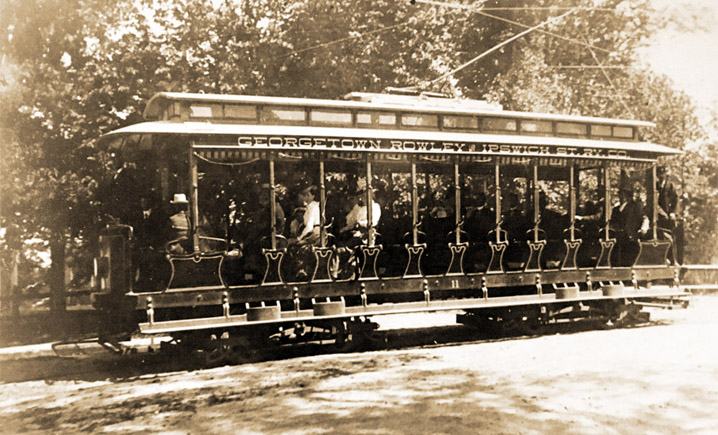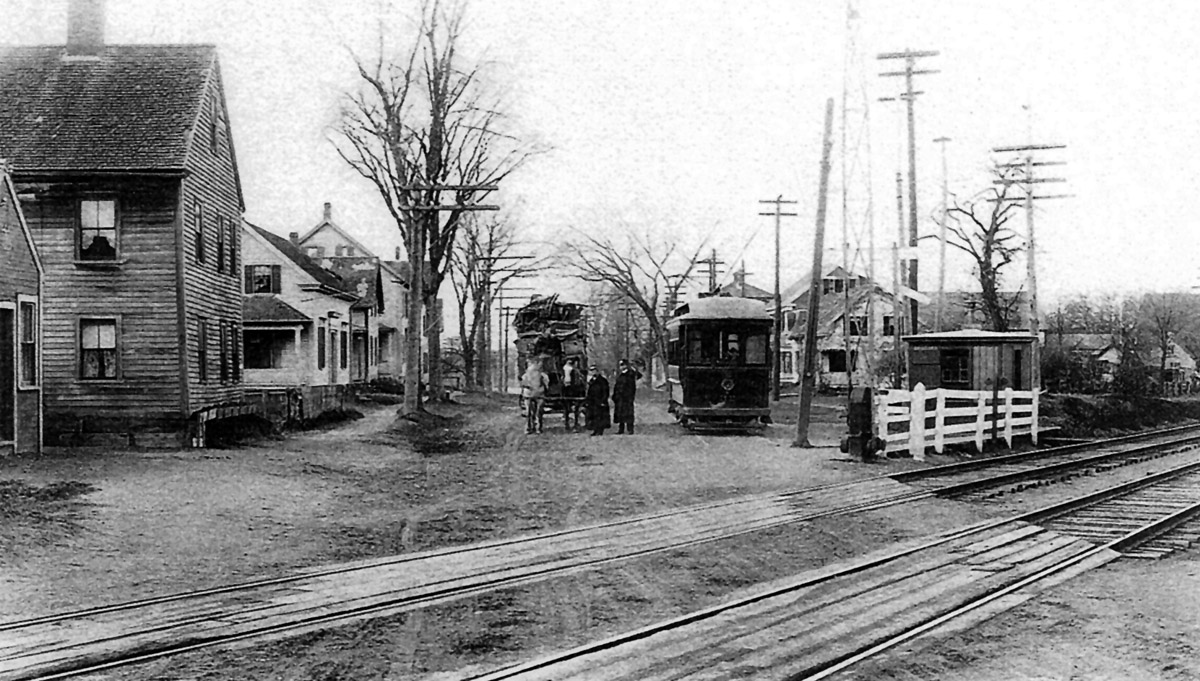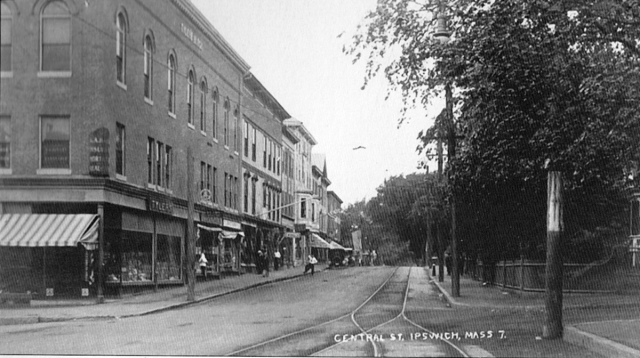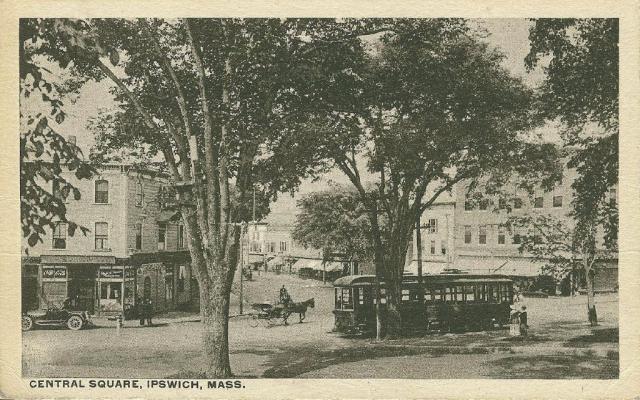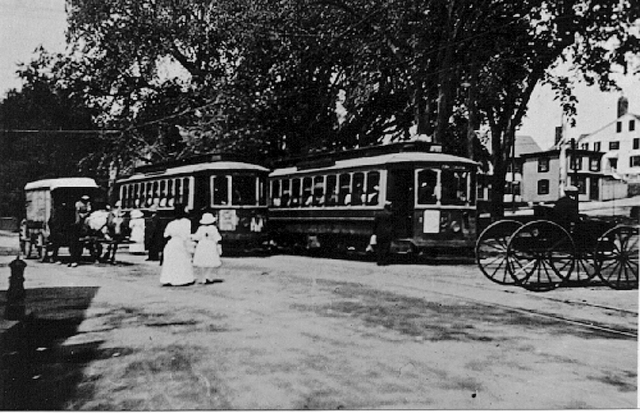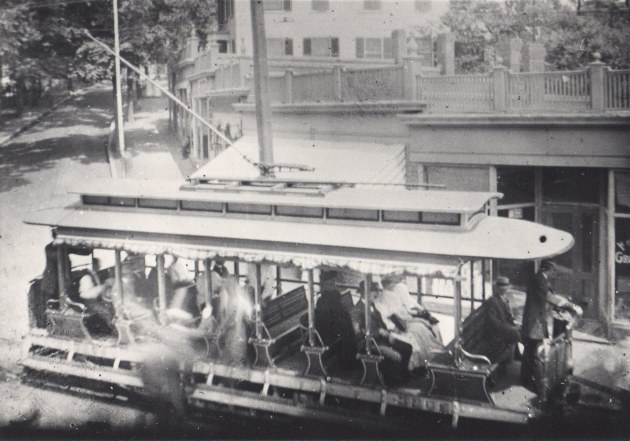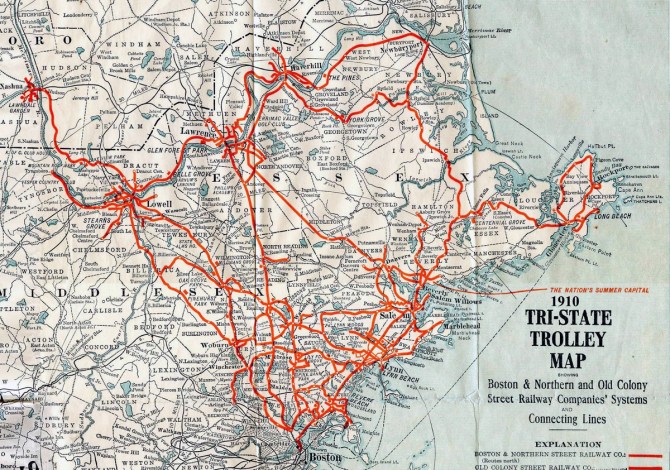The brief era of horse-drawn trolleys apparently never materialized in Ipswich. An electric trolley line from Beverly through Hamilton to Essex and Gloucester opened in 1895, and on June 26, 1896, the first car on the branch that followed Candlewood Road to Ipswich arrived in town, greeted by a large crowd at Market Square. On that day, hundreds of people took advantage of the free ride to Essex Junction, some enjoying it as many as three times!
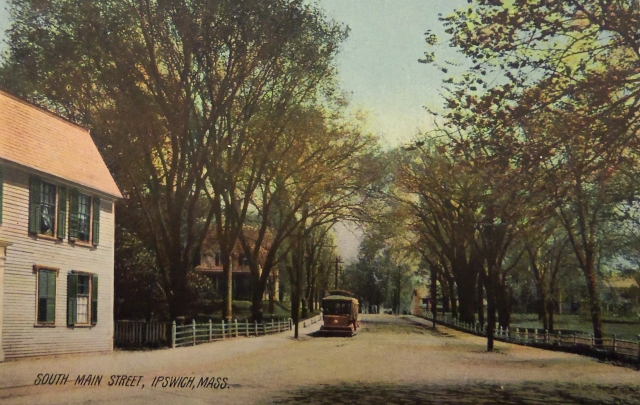
The following year, the Georgetown, Rowley, and Ipswich Street Railway opened, but its tracks ended at the High Street crossing of the B&M railroad. Passengers wishing to continue through Ipswich had to walk the distance from High Street to Market Square to change lines. In 1906 the town and B&M railway gained permission from the Massachusetts Grade Crossing Commission to construct the High Street Bridge. and in July 1907, the first set of improved eight-wheel trolleys crossed the bridge, making it possible to go from one end of Essex County to the other for 15 cents. The Haverhill, Georgetown & Danvers Street Railway began service in 1896. As in Ipswich, passengers would have to disembark and walk to the center of Georgetown because the railroad commission would not allow the streetcars to cross the track. This inconvenience was eventually corrected by building a trestle that crossed high over the tracks.

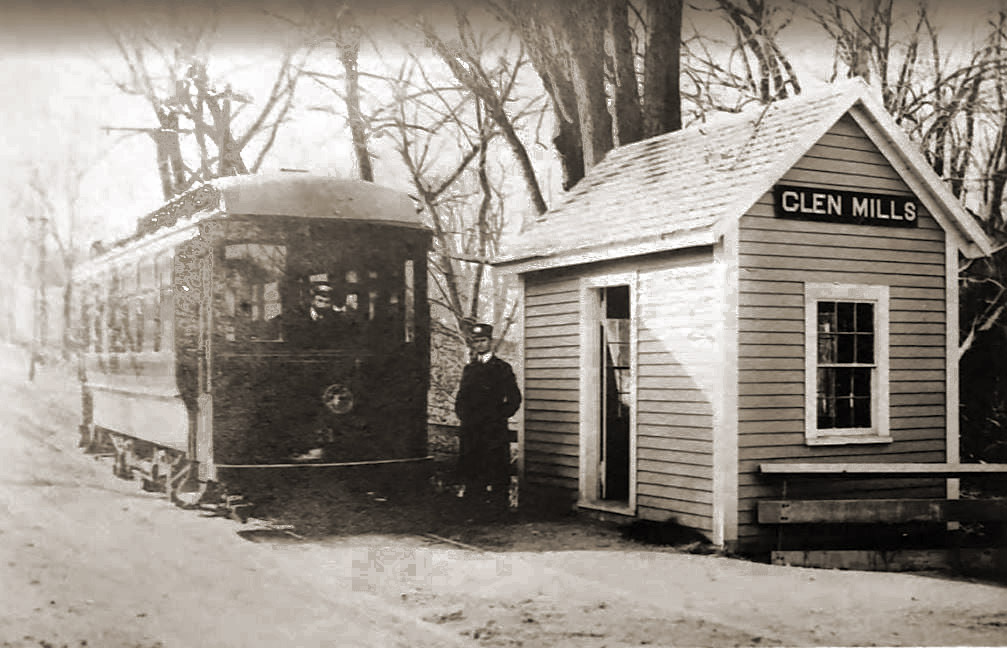

The era of the trolley ended as quickly as it came. By 1919 the streets were beginning to fill with Mr. Ford’s Model Ts, and people were no longer willing to wait for a ride.




Sources:
View more trolleys at Manchester Streetcars and the Seashore Trolley Museum
Trolleys had to contend with people, cows, horses, wagons, and deteriorating tracks. The video below is taken from a trolley on a Boston street, circa 1900.

